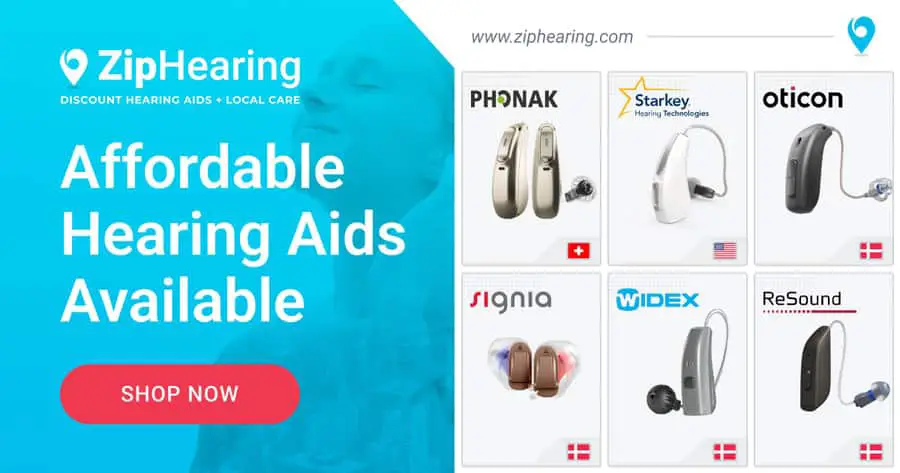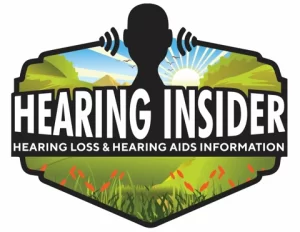As an audiologist, I am often asked about the different options available for hearing aids. With the recent introduction of Over-The-Counter (OTC) hearing aids, many seniors are wondering how they compare to traditional hearing aids, and what impact they may have on their wallets. In this article, I will provide an overview of OTC hearing aids and traditional hearing aids, and discuss the importance of considering ALL costs when choosing a hearing aid.
| OTC Hearing Aids | Traditional Hearing Aids (Unbundled) | Traditional Hearing Aids (Bundled) | |
|---|---|---|---|
| Price Range | $200 – $1,000 | $1,000 – $4,400+ | $1500 – $6000+ |
| Inclusions | Basic features | Advanced features | Advanced features |
| Where to Purchase | Online or local drug stores | ZipHearing.com, HearBetter.com, or some local audiologist clinics | A local audiology clinic |
| Limitations | Self-fitted (off an app on your phone) | Professionally fitted (included in price) | Professionally fitted (included in price) |
| Features | Limited | Advanced | Advanced |
| Performance | Moderate | Excellent | Excellent |
| Accessibility to Services and Support | Limited – some companies have video chat features for questions. | Pay per additional visit with the audiologist (approximately $60 per visit) | Call Follow Up visits are included during the warranty period (Usually 3 years) |
| Warranty | 1 Year (Usually) | 2 – 3 years | 3 years |
| Cost of Repairs After Warranty | Not available. Buy a new device. Unless you can fix it with a receiver change. | Approximately $300 and includes another 6 months of warranty | Approximately $300 and includes another 6 months of warranty |
| Loss and Damage Policy | None, Buy a new device | $350 deductible but get new devices during the warranty | $200 deductible but get new devices during the warranty |
| Supplies (Batteries and Wax Traps) | $40 per year | $40 per year | $40 per year |
| Life Expectancy of Devices | 2 years | 7 – 8 years (but likely a few repairs needed) | 7 – 8 years (but likely a few repairs needed) |
What Are OTC Devices
OTC hearing aids are devices that can be purchased without a prescription, directly from a retail store,y or online. These devices are designed for people with mild to moderate hearing loss and are intended to be affordable and accessible. OTC hearing aids are often self-fitted meaning that you adjust them on your own from an app on your phone. They come with a variety of features, including volume control and noise reduction. They do have various form factors such as behind the ear and in the ear style but they are not custom fit to an ear.
Explanation of Traditional Hearing Aids
Traditional hearing aids or professionally fit hearing aids, on the other hand, are prescribed by a licensed audiologist and are tailored to the individual’s specific hearing needs. Traditional hearing aids are available in a variety of styles, including behind-the-ear (BTE/RIC), in-the-ear (ITE), and completely-in-canal (CIC). They can use custom-fit earmolds or generic domes. They often come with advanced features such as directional microphones, algorithmic noise reduction, wind noise reduction, Bluetooth functionality, telecoil, wireless connectivity, etc.
Importance of Discussing Costs
The cost of hearing aids can be a significant barrier for many seniors seeking hearing assistance. Traditional hearing aids are considered affordable under $2000 to six or seven thousand dollars per pair of premium devices. Aids are often sold as “unbundled” on the internet with a pair of high end devices being around $4,400 with additional costs for follow-up appointments and maintenance. OTC hearing aids, on the other hand, are designed to be more affordable, with prices ranging from around $200 (GoHearing) to $3,000 per pair (Eargo), with the most popular styles being $700-800 (Lexie).
It is important to consider the cost of hearing aids when making a decision, but it is also essential to remember that price should not be the only factor considered. The best hearing aid for you is one that fits your lifestyle and hearing needs, regardless of its cost.
Factors Affecting the Cost of OTC Hearing Aids and Traditional Hearing Aids
When it comes to the cost of hearing aids, several factors come into play. Understanding these factors can help you make an informed decision when choosing between OTC hearing aids and traditional hearing aids. In this section, I will discuss four factors that affect the cost of hearing aids.
Manufacturing Process
The manufacturing process of hearing aids plays a significant role in determining their cost. Traditional hearing aids are typically custom-made to fit the unique shape of your ear and your specific hearing needs. This customization involves several steps, including taking impressions of your ears and programming the hearing aids to your audiogram. These steps add to the overall cost of traditional hearing aids. The professionally fit hearing aids also come with much longer warranties and can be repaired many years down the road.
OTC hearing aids, on the other hand, are mass-produced and often self-fitted. This streamlined manufacturing process reduces the overall cost of OTC hearing aids, making them more affordable and accessible for many seniors. However, the devices have very limited repair processes. They will likely need to be replaced every 2 years or so.

Distribution Channels
Another factor that affects the cost of hearing aids is the distribution channel. Traditional hearing aids are usually sold through audiologists or hearing instrument specialists, who often provide follow-up care and maintenance services. These services are factored into the cost of traditional hearing aids.
OTC hearing aids, however, are sold directly to consumers through retail stores or online. This direct-to-consumer model eliminates the middleman and can result in lower prices for OTC hearing aids.
Regulatory Compliance
Regulatory compliance is another factor that affects the cost of hearing aids. Traditional hearing aids must comply with strict regulations set by the Food and Drug Administration (FDA) to ensure their safety and effectiveness. Compliance with these regulations can add to the overall cost of traditional hearing aids.
OTC hearing aids are also subject to FDA regulations, but they are held to less stringent standards than traditional hearing aids. This reduced regulatory burden can result in lower costs for OTC hearing aids.
Insurance Coverage
Finally, insurance coverage can play a significant role in the cost of hearing aids. Traditional hearing aids are often covered, at least in part, by Medicare and private insurance plans. However, coverage varies by plan and may require co-payments or deductibles.
OTC hearing aids, on the other hand, are not typically covered by insurance plans. This lack of coverage can make OTC hearing aids more expensive for seniors who do not have the financial means to pay for them out-of-pocket.
Amount Company Spends on Research
Major hearing aid companies spend tens of millions of dollars annually on research and developing patents and conducting peer-reviewed research. They need the latest and greatest technology in helping people hear better in background noise to compete.
On the other hand, OTC aids are really made by those same companies. But they have partnered with another brand to not discount their flagship products. Signia and Widex have partnered with Sony, Bose partnered with Lexie. Phonak bought out Sennheiser to release their products. There are other companies that are not part of the major manufacturers who do not have the same access to the decades of previous research such as Eargo and Otofonix.
My Thoughts

Choosing between OTC hearing aids and traditional hearing aids ultimately depends on your individual needs and preferences. If you have complex hearing needs and require advanced features and performance, traditional hearing aids may be the better option for you. However, if you have mild to moderate hearing loss and prefer a more affordable and accessible option, OTC hearing aids may be a suitable choice. But I encourage you to do something. Don’t live with untreated hearing loss.
Seek counsel from an Audiologist. A hearing test is covered by all insurance and then the audiologist can give you personalized counsel with your circumstances taken into account. If you want to see my recommendation on current devices you can read it.
Remember, addressing your hearing loss can significantly improve your quality of life, so don’t hesitate to seek help if you need it.

